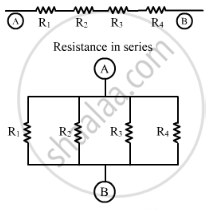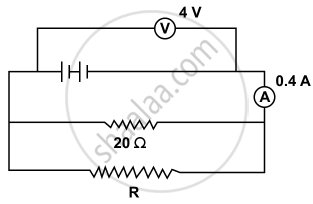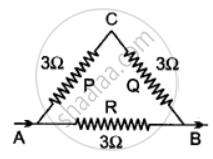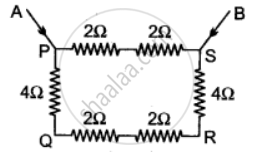Advertisements
Advertisements
Question
Explain with diagram what is meant by the "series combination" and "parallel combination" of resistances. In which case the resultant resistance is : (i) less, and (ii) more, than either of the individual resistances?
Solution

The series resistance is given by R = R1 + R2 + R3 + R4. Hence, it is more than the individual resistance.
The parallel resistance is given by 1 / R = 1 / R1 + 1 / R2 + 1 / R3 + 1 / R4. Hence, it is less than the individual resistance.
APPEARS IN
RELATED QUESTIONS
How will you connect three resistors of 2 Ω, 3 Ω and 5 Ω respectively so as to obtain a resultant of 2.5 Ω? Draw the diagram to show the arrangement.
In parallel combination of resistances ______.
Which of the following combinations have the same equivalent resistance between X and Y?
In the following figure calculate:
- the total resistance of the circuit
- the value of R, and
- the current flowing in R.

What is the equivalent resistance of 5 equal resistors, each of value 2`Omega` 1 when oonnected in (a) Series ( b) ParaIleI?
The equivalent resistance of a parallel combination of two resistors of 30 Ω and 60 Ω is ______________.
Solve the following question:
In an electric circuit, two resistors of 12 0 each are joined in parallel to a 6 V battery. Find the current drawn from the battery.
Calculate equivalent resistance in the following cases:


The least resistance obtained by using 2 Ω, 4 Ω, 1 Ω and 100 Ω is:
Three resistors of 6Ω, 4Ω and 4Ω are connected together so that the total resistance is 8Ω. Draw a diagram to show this arrangement and give reason to justify your answer.
